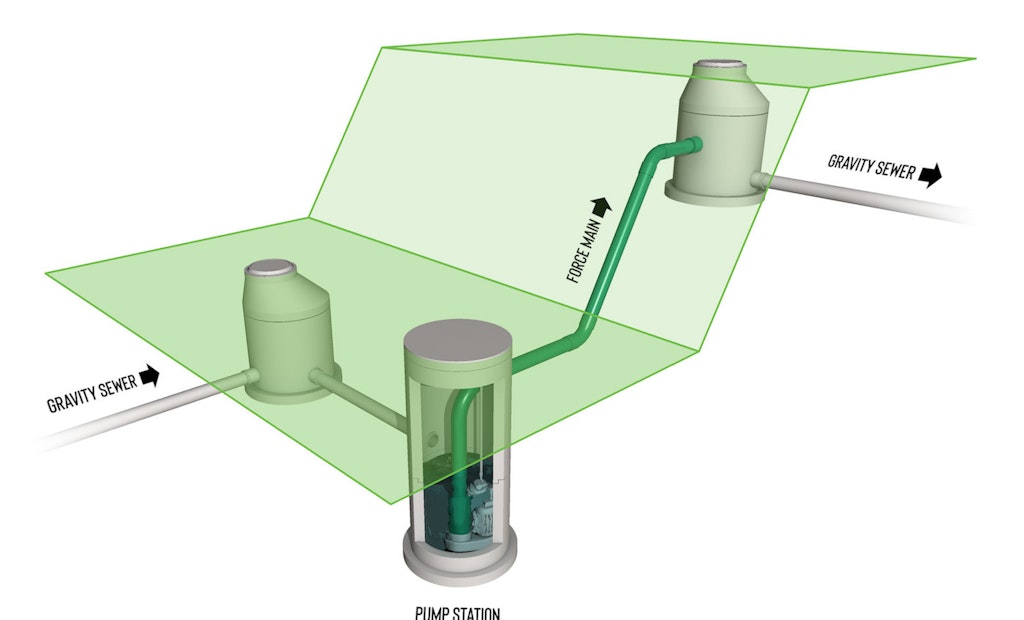Interested in Inspection?
Get Inspection articles, news and videos right in your inbox! Sign up now.
Inspection + Get AlertsSewer systems are made up of various components that work together to transport wastewater from homes and buildings to a facility for treatment.
Wastewater initially travels through a lateral pipe on an individual property before combining with the wastewater of neighboring properties in the sewer main located under a nearby street. From there, the wastewater travels through a network of pipes until it eventually reaches a treatment plant for reuse or recycle.
Gravity lines vs. force mains
In most cases, the primary force pushing the wastewater from its place of origin to its final location for treatment is gravity. That means no mechanical or power sources are required to move the wastewater along.
But what about wastewater that needs to travel from low-lying areas up steep hills to higher elevations? In systems where gravity cannot transport the wastewater from point A to point B, pressurized sewer pipes, called force mains, are required.
Force mains rely on mechanical pumps or compressors located in a lift station to create the pressure to drive the wastewater up to higher elevations. This provides a solution for regions where the topography can’t support a gravity-reliant system, ensuring the wastewater still gets where it needs to go.
Maintaining force mains
Force mains may be constructed from one of a number of materials, including cast iron, steel, plastic, asbestos cement or fiberglass reinforced epoxy.
Like all other parts of a sewer system, force mains require routine visual inspections and maintenance to ensure proper function and mitigate risks. They are also usually subject to the same modes of failure as conventional gravity lines, including clogs, breaks and leaks, corrosion, age and more.
Learn more about Envirosight’s lineup of inspection technology, from the ROVVER X sewer inspection crawler to the SAT II lateral launch crawler:
Visit the Envirosight Storefront






